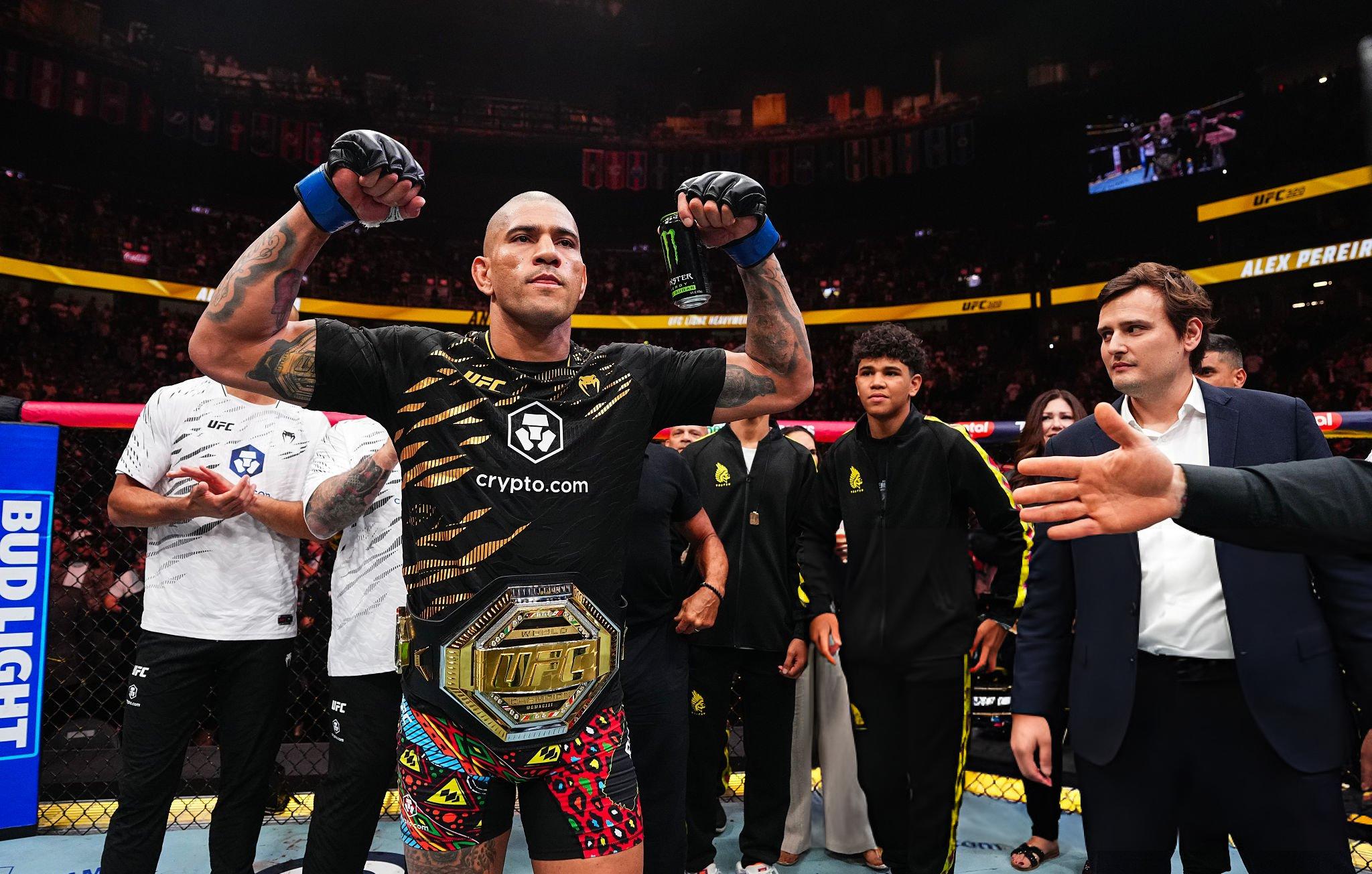
The second meeting between Alex Pereira and Magomed Ankalaev dispelled the illusion of a “chess-like” rematch. Instead of intricate maneuvering—lightning-fast dominance and a knockout in under a minute and a half. The Brazilian returned to his predatory, kickboxing nature, while Magomed found himself in the unaccustomed role of the one playing catch-up. The result—80 seconds of pure aggression, where every technical choice instantly converted into positional advantage.
What Happened in the First Bout: Respect for Wrestling and Losing the Center of the Cage
Their first encounter resembled a match built on tempo and trading space. Ankalaev kept flashing levels—dipping and showing the shot—forcing Pereira to back toward the fence and value a base position by the cage. The Brazilian avoided wild exchanges, often ceded the center, and whenever he upped the risk he ate reactive takedown threats. According to the broadcast’s internal metrics, it was Magomed who moved forward more and claimed territory, while Alex accepted a game where tempo control, not pressure, was valued.
Rebooting the Plan: Teixeira Demanded Pressure—Pereira Switched On "Kickboxer Mode"
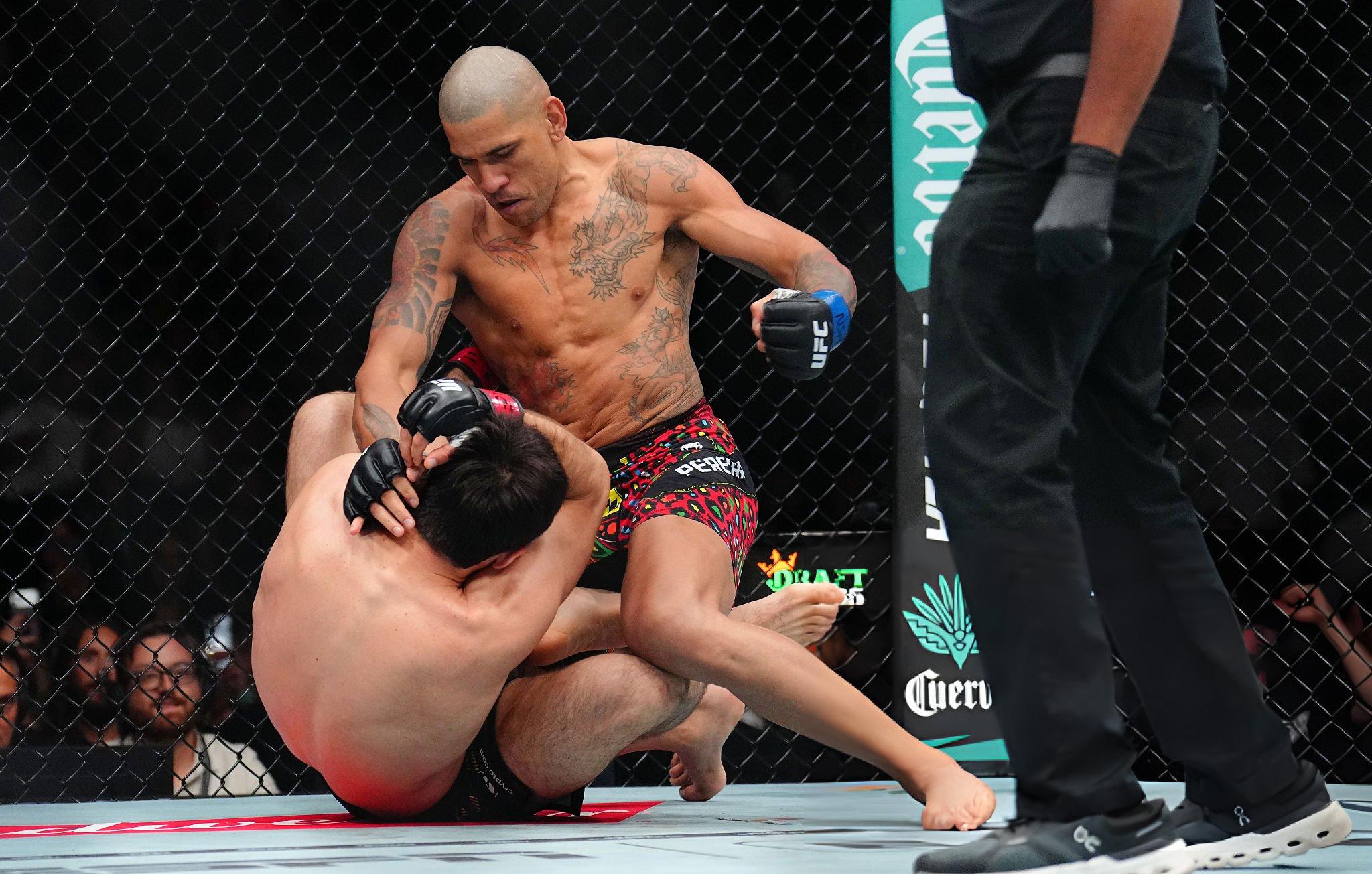
Before the rematch, coach Glover Teixeira predicted a very different Pereira—first-round aggression and pressure across the entire distance. And from the opening seconds Alex switched on the rhythm native to his stance: a wide base, a light bounce, quick start-stops, and hop-in attacks. Most importantly, the excessive respect for the takedown threat disappeared. Ankalaev’s level feints were registered, but they no longer froze his decision-making. The Brazilian stopped automatically yielding the center, met Magomed’s shifts, and more often set the lanes for exchanges himself.
High Pace Without Looking Back: Why Ankalaev Didn’t "Cool" the Rematch With Wrestling
On paper, the most logical answer to a forced pace is a reactive shot and putting him on the canvas. Even if the first takedown doesn’t land, the attempt itself reinstills a healthy respect for wrestling in a striker’s head. But Magomed didn’t impose chained follow-ups to the legs and didn’t snatch under Pereira’s wide step. The pace stayed Brazilian: short exits, constant low kicks, firing from the outside shoulder line—all of it breaks the timing of counters and prevents a defensive system from assembling into its usual shape.
The Low Kick as a Jack: Why Strike With the Rear Leg and What It Led To
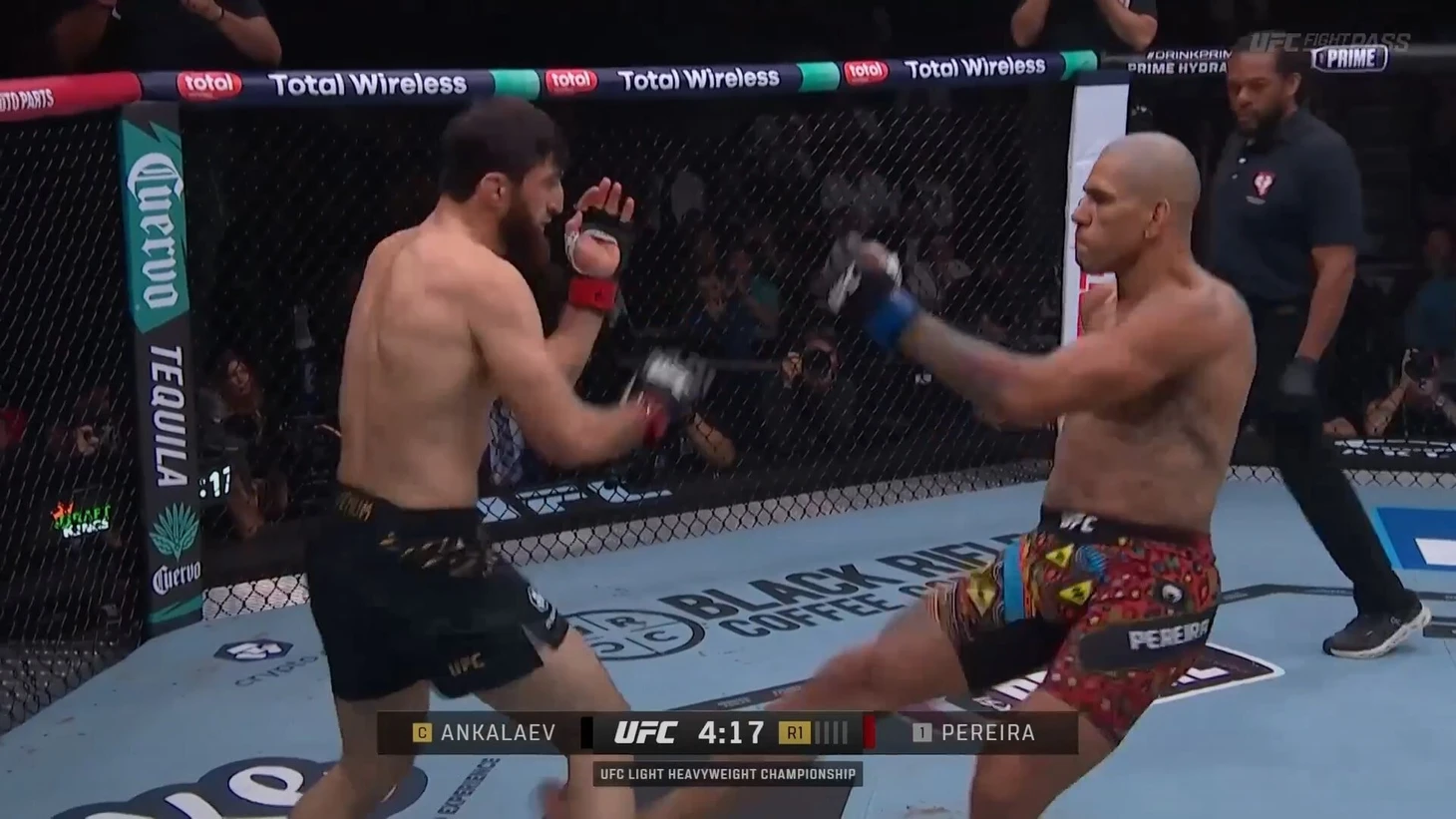
Pereira’s key investment was rear-leg (right) low kicks. The risk is higher: the opponent sees the wind-up and can check with the shin or catch the leg. But the dividends are greater—the strike carries more force, and the opponent’s recoil is bigger. A series of heavy connections forced Ankalaev to switch stances, moving into southpaw. For a striker it’s a golden window: any stance switch changes the geometry of defense and the hand-and-chin habits. That’s where Magomed’s old-caliber vulnerability surfaced—he lowered his left hand and left the lane open for the right overhand.
Moment of Truth: A Right Overhand Through the Seam of a New Stance
After another low kick, Pereira accelerated the exchange and sliced the distance with a right overhand—clean, textbook, over the opponent’s lead hand. Ankalaev’s stance switch worked against him: the distance was misjudged, the shoulder shield wasn’t fully set, the chin line was open. The punch crushed his base, sent Magomed to the canvas, and the follow-up finished the sequence before his defense could reboot. It wasn’t a “lucky bomb,” but a logical continuation of the pressure: low kicks—stance switch—opened sector—overhand.
The Tactical Virtue of Risk: Two Decisions That Decided Everything
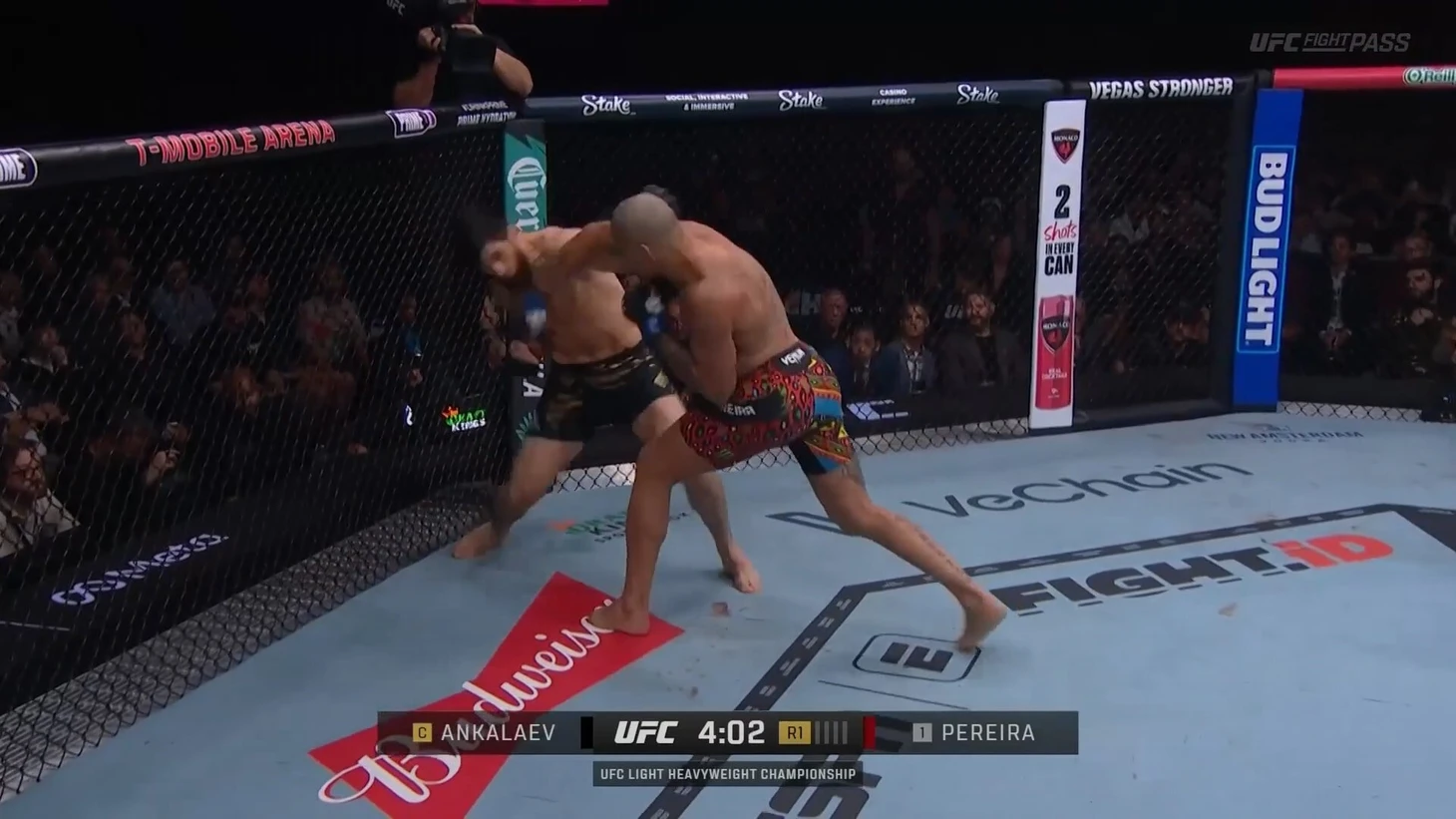
Pereira took two risks. First—strategically, abandoning the “careful” reading of feints and restoring his pressure as a system, not a flare. Then—tactically, accelerating the finishing sequence with a right overhand at the moment his opponent’s usual defensive mechanics were disrupted. Both risks were calculated and backed by preparation: a wide stance, constant distance cuts, targeted rear-leg low kicks, and instant reading of the opponent’s reactions.
What’s Next: Lessons for Both and a New Balance of Power
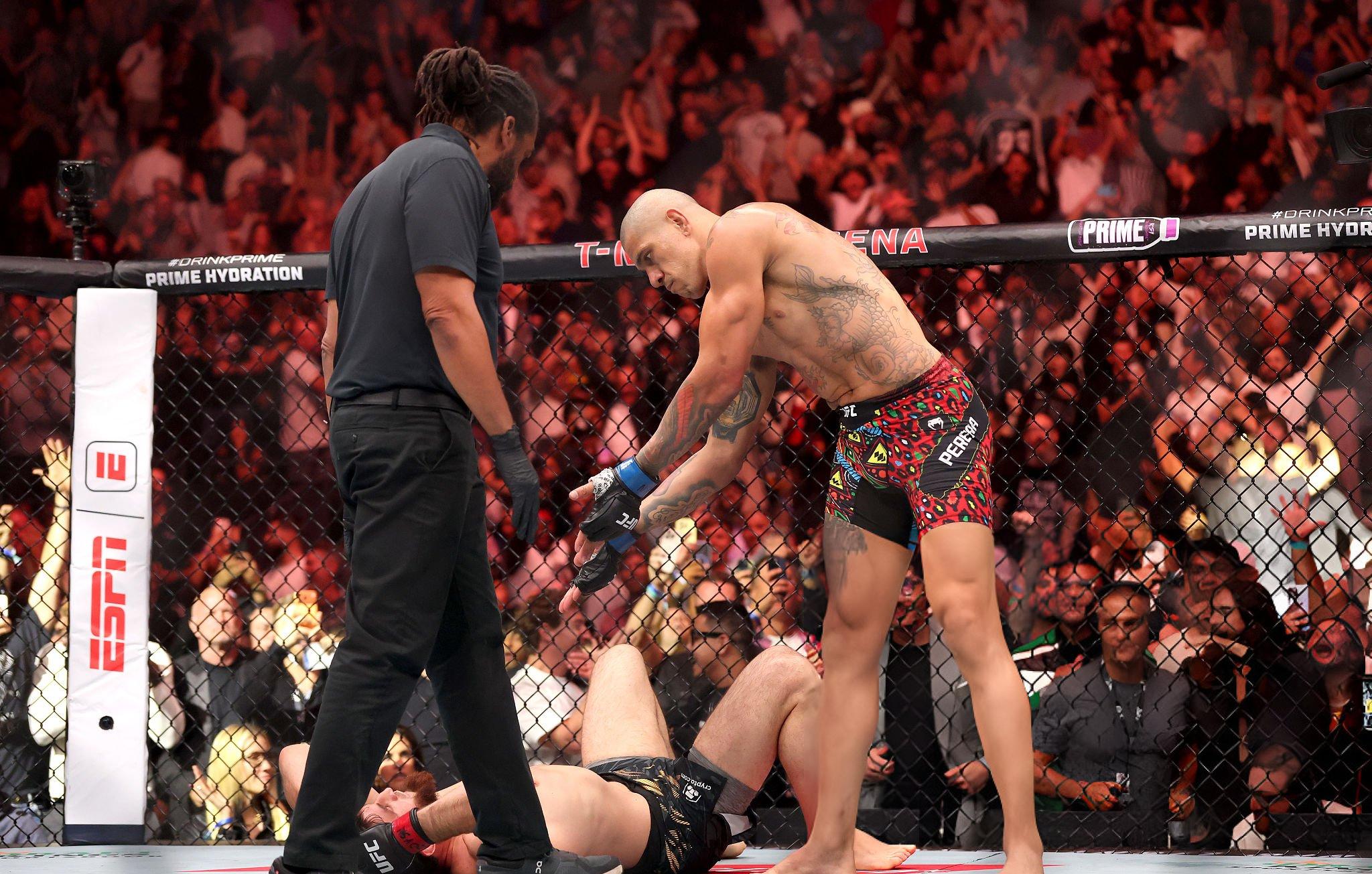
For Ankalaev the main takeaway is simple and harsh: against a fast kickboxer, you can’t treat the shot as a hypothetical option—you must force it to be respected from the first minute. Plus—train mirrored defensive habits: switching into southpaw without automatic hand discipline turns any opponent’s overhand into a knockout threat. For Pereira the rematch is confirmation of the right identity. His MMA success is built not on caution but on disciplined aggression, where each strike sets up the next tactical layer.
Stylish, audacious, and deserved: Pereira returned to himself and forced his opponent to play his game. Eighty seconds is not about luck, but about a clear plan executed without pauses or doubt. That’s what championship decisions look like at light heavyweight.








